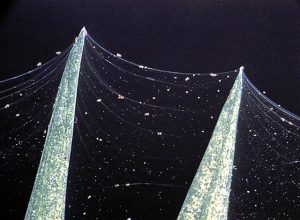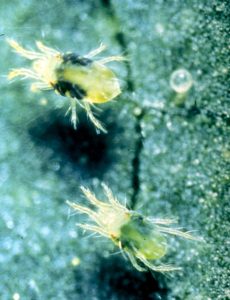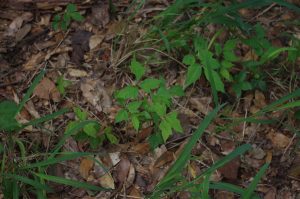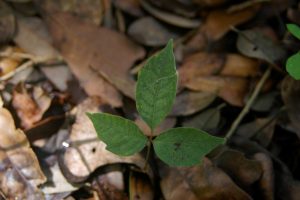Last Updated on November 20, 2025 by Stella Canfield
Halloween is a time for ghosts, ghouls and goblins, but the real fright might be lurking right under your nose. From destructive pests to dangerous weeds, these formidable foes can transform your greenery into a gruesome graveyard.
Fangs in the Foliage: Spider Mites
 Spider mites might be even scarier than your typical spider, thanks to their piercing, sucking mouthparts that feed on plant cell contents. More than spinning webs on lush leaves, these tiny pests reproduce rapidly and don’t need to mate to multiply. They cause serious damage by turning leaves bronze and altering plant water balance. Left untreated, heavy infestations can result in defoliation and even plant death.
Spider mites might be even scarier than your typical spider, thanks to their piercing, sucking mouthparts that feed on plant cell contents. More than spinning webs on lush leaves, these tiny pests reproduce rapidly and don’t need to mate to multiply. They cause serious damage by turning leaves bronze and altering plant water balance. Left untreated, heavy infestations can result in defoliation and even plant death.
“The main problem with spider mites is that they’re so small people don’t even notice they have them,” says Lance Osborne, entomology professor at the UF/IFAS Mid-Florida Research and Education Center (MREC). “People don’t know what they’re experiencing is coming from a living organism.”

Despite spider mites’ stealthy nature, growers aren’t defenseless. Spider mites have natural predators, such as predatory mites, predatory thrips and certain fly species, which can help keep their populations at bay especially when used in biological control, a key component of integrated pest management (IPM) that relies on natural predators to control pest populations and a major focus of Osborne’s research.
Biological control helps to reduce the reliance on pesticides by utilizing pests’ natural enemies to mitigate their population. This is especially helpful when it comes to spider mites, says Osborne, as they develop resistance to pesticides quickly, creating a frustrating cycle.
“By the time a chemical is legal to use in the United States to treat spider mites resistant to the last pesticide, somewhere in the world, the mites have often already become resistant to the new one,” says Osborne. “That’s why we focus on using ‘good guys’ to eat the ‘bad guys.’”
Pots, Potions, and …Poison Ivy?

Poison ivy might not have superpowers like DC Comics’ ruby-red-haired anti-hero, but the real Toxicodendron radicans is still something to be feared.
While it may appear like any other plant, poison ivy is notorious for causing severe allergic reactions through contact with urushiol, an oily resin found in all parts of the infamous plant. Contact with the skin can result in red, swollen blisters and cause severe itching within just a few hours.
“One of the biggest challenges with poison ivy is safely removing it as it can cause dermatitis,” says Chris Marble, weed specialist and associate professor of ornamental and landscape weed management at MREC. Marble’s research focuses on the growth and management of weeds and invasive plant species in landscapes and ornamental plant production, including poison ivy. “It’s important to wear protective clothing like gloves and to cover your arms and legs when handling it.” For those more sensitive, Marble also recommends protective eyewear and chemical-resistant gloves.
For removing large bushes of poison ivy, Marble suggests cutting the plant and treating the bottom of it with a systemic post-emergence herbicide, which is applied after the weeds have sprouted, to prevent regrowth. Smaller patches, however, can be removed manually with proper protection.
To identify poison ivy, the key feature to look for is its distinct cluster of three leaflets with the middle being the largest and having a longer stem.
“A good rule of thumb is leaves of three, let it be,” shares Marble. But if you’re unsure of what type of weed is growing in your landscape, you can always identify it by flower color.
 5
5

